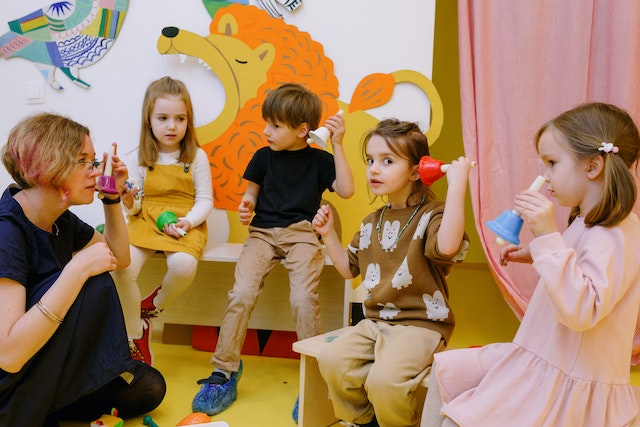
https://www.pexels.com/photo/teacher-asking-a-question-to-the-class-5212345/
When it comes to math lessons, students may naturally have varying levels of interest and aptitude. Thus, an educator must be adaptable and comprehend how different kids learn best to cater to their individual needs.
Use the following strategies to assist young learners in understanding abstract math for 4 graders concepts, improve their problem-solving abilities, and promote math conversations in the classroom.
1. Make it interactive
Because of learning new, abstract concepts that can be tough for kids to visualize, elementary math can be challenging.
Consider the experience of a five-year-old seeing a subtraction problem for the first time. They may find it difficult to picture a situation where one quantity is subtracted from another because the idea is entirely foreign to them.
Utilizing manipulatives and practical instruments helps young children comprehend math much better.
2. Reward progress
For kids, mastering topics like multiplication is a crucial milestone, so why not take the opportunity to indulge in a little celebration? Take time to recognize students’ accomplishments after a significant project, test, or unit. Give them a chance to present their finished works to the class.
To add more learning to the enjoyment, let students choose the theme, necessary spending limits, decorations, and volunteers.
3. Employ graphics and visuals
Numerous graphs and illustrations can be found in math textbooks, but this isn’t the only place where they should be used.

https://www.pexels.com/photo/children-with-her-students-holding-different-color-bells-8535230/
The most effective use of visuals in elementary math is combining them with particular practice or direction; suitable materials can be created by a teacher or taken from the best math learning websites.
Visuals typically demonstrate primary math concepts in an entertaining way by using vibrant pictures, graphics, and catchy songs. Students can review lessons until they comprehend each idea completely.
4. Apply math concepts to real-world situations
Introduce arithmetic to kids in all its practical applications through:
- Word puzzles that are personalized according to your pupils’ interests and lives
- Projects which combine community service with academic learning
Project-based learning allows students to follow a specific approach to find a solution. Students have more opportunities to watch math in action and conduct their experiments.
5. Request that pupils share their findings
Have you ever noticed how much more assured you become when expressing a concept to someone else? The process of considering alternatives, decisions, and outcomes is known as meta-cognition. It significantly affects how kids learn.
Ask learners to devise possible solutions to math problems before giving them one. Encourage them also to collaborate and respectfully propose different solutions.
This method can be used when teaching elementary math at every stage of the problem-solving process. Ask pupils to explain in detail how they arrived at their response once they have answered.
6. Foster teamwork
Students benefit from one another’s knowledge when they collaborate. There are many math learning approaches that teachers can use to make teamwork in the classroom simple, such as through:
- Cooperative learning: Each student takes on a distinct role in a collaborative assignment.
- Discussion-based instruction: Students debate a situation or a solution.
Take away
Collaboration among students and a good relationship with a teacher improve kids’ performance as they work together to enhance comprehension of mathematics. Make sure you practice respectful and open-minded listening when dealing with your students.